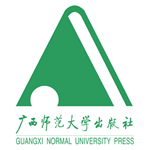This is a manuscript that focuses on the survival and inheritance of traditional craftsmen in Hunan. From February 2016 to December 2018, which lasted 3 years, the author searched for 40 folk craftsmen in Hunan, and conducted personal interviews with these craftsmen who insisted on traditional craftsmanship, and recorded the inheritance and adherence to traditions with text and photos. Huxiang craftsman spirit of craftsmanship. The interviewees are roughly divided into two categories, one is with a family history, the longest being up to 9 generations; the other is a lifelong apprenticeship. They are all handmade and do not rely on large-scale machinery and equipment at all. Among the interviewees, 20 have entered the “intangible cultural heritage” list at the national, provincial, municipal, and district levels, and have a certain social reputation and status, such as Long Jitang, a silverware maker in Xiangxi, and a ceramic smelter in Changsha Tongguan. Liu Zhiguang; The remaining 20 are folk traditional craftsmen, pure craft earners scattered in the streets and lanes, such as the incense maker who follows the traditional manufacturing method and the last knifeman in the river. Among them are the elderly, the middle-aged, and those born in the 1980s who are dedicated to traditional craftsmanship. Some of the projects interviewed have developed prosperously, some have few successors, and some are in jeopardy. The manuscript is recorded with a combination of text and pictures. The text is mainly traced from the profound family production background and inheritance of several generations. The family history and inheritance history of the craftsman is described in a literary way. The text is concise and exquisite; the pictures are true and true. Accurately conduct a large number of samples during the crafting process to give readers a sense of appreciation and presence. The manuscript not only truly reflects the current status of Hunan handicraft practitioners, but also a record of traditional handicraft culture. It is a clear evidence of the spiritual inheritance of Hunan craftsmen and the preservation of the beauty of daily life that we once possessed.





























